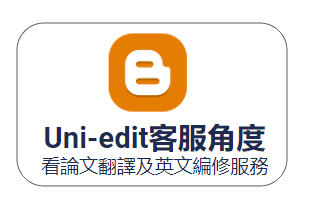難度:初階
我們有位客戶諮詢期刊的一明確要求,此係要求作者於提交稿件時,需要自行推薦同儕評審員。
“我的目標期刊要求我提交一份同儕評審員的名單以審查我的論文,這對我來說似乎不太尋常。不是應該由期刊選擇同儕評審員以確保審查客觀。對我來說,這種要求好像是我可選擇友好的評審員獲得正面積極的評價,而無需在意研究的科研價值。”
我們的客戶所指的是某些期刊要求作者於投稿提交一份同儕評審員的名單。大部分期刊沒有這樣明確的要求,但作者如果有提供,則會酌予考慮該名單。
乍一看,客戶的擔憂是有道理的。出版決定應僅基於論文的研究價值,而不是基於作者認識誰,不是嗎?然而,這種做法的原因並不是偏袒,實際上這有助於提高論文的品質並確保出版決定是公正的。
為什麼要推薦同儕審稿?
這種做法的目的並非給予作者優惠待遇,而是確保他們得到公平的待遇。主要原因是,期刊編輯需依領域不同的論文分配給同儕評審員,與期刊編輯相比,論文作者可能更瞭解哪些專家最有資格評估其特定領域的研究。
這種要求提供同儕評審員的實務做法在研究領域範圍較廣泛的期刊中尤為常見:因期刊範圍越窄,編輯委員會越有可能已經與相關領域的權威專家取得聯繫(這些專家甚至可能在編輯委員會任職)。
記住,你提交的名單僅是個建議:評審員可以拒絕評審工作,編輯委員會也有權不請名單中的人員進行評審工作。這樣,期刊可以避免懷疑、偏袒或存在偏見的情況。此外,同儕審稿是匿名的:你也永遠不可能知道任何審你的稿件的同儕評審員的姓名/身份。
第1步 選擇7-10個適當評審員
首先,從相關研究領域中選擇7-10個發表過論文的作者或權威專家。他們的研究課題與你的越相近,就越應該考慮列出他們的名字。他們可以是你認識的,也可以是素未謀面的,可以是會議上的演講者,或是該研究之專家等。在推薦他們作為評審員之前與其聯繫並不必要,如果事先聯繫的話,他們更有可能會同意接受期刊的正式審查邀請。
你可能會有疑問:如果我的論文只需由兩三人進行審查,為什麼我應該推薦7-10個評審員?再說一次,你推薦的評審員清單只是一個建議,不是您推薦的每個評審員都會被邀請進行評審工作,也不是每個評審員都會同意接受評審工作。
選擇你認識的,或之前合作過的研究人員都是可以的。但是,千萬不要選擇有利益衝突的評審員,這當然包括你或者共同作者機構的研究人員,例如,可能的評審員對您測試的技術、流程、化合物等擁有專利。
第2步 選擇你所引用的作者或期刊知道的作者
你所引用的作者已有一明確的興趣及方向,並能正確闡明其研究範圍和結論,因此,若評審員為您引用之作者,將可確保您的論文研究課題描述是否正確。此外,這也將您的知識傳播給最有可能閱讀、及引用它的人、並可拓展新的研究合作機會。如果你並不認識許多相關領域的研究人員,這正是建立聯繫的好時機。
對於推薦引用作者當評審員的方法,最好選擇與您的著作直接相關的作者,而非在論文內一般資訊所引用的作者,盡可能專注於你提及多次或者其研究發現對你的論文很有幫助的作者。
如果你剛剛接觸這個領域或者感覺你所推薦的作者不會公正地評審你的論文(例如,你對其研究發現有所批評),那另一個不錯的選擇是流覽目標期刊,選擇近幾年相關領域發表過論文的作者或共同作者為評審員。編輯委員會已經對這些作者很熟悉,作者也可能很樂意擔任發表過他們文章的同一期刊的同儕評審員。
第3步 選擇能提供批判性和建設性意見的評審員
更全面的考慮論文的目的:你只想順利發表,以便增列簡歷或個人網站上的出版物列表?還是你希望論文能反映出強有力的研究,其成果會被眾多讀者尊重和引用?
事實是,沒有一個研究者或實驗室對研究課題有唯一的理解:結合同行的意見,您的研究更能反映研究課題背後的真實性,並能受“時間的考驗”,例如,十年後您的研究仍與此領域高度相關,就這點而言,如果您的研究課題廣泛、且能引起國際興趣,選擇來自各個國家的評審員,則更能協助您修訂及調整論文,具有全球吸引力。
你可能經歷過某個期刊副主編或主題專家評審員對您的論文提出的偏見。尤其當副主編可能關注的是期刊合適性和範圍,而主題專家評審員可能正在設法爭取資金或被其他事情佔據,因而無法提供適當的評審意見。如果您認為偏見可能存在,您還可以在另一個列表中指定不適合之評審員名單,在這種情況下,一定要解釋並說明原因(見下文第5步)。
第4步 選擇初級研究員
相關領域中具知名度及最受好評的研究人員通常很忙。高級研究人員收到的同儕審稿工作應接不暇,為優先考慮其他項目可能會不自覺地倉促完成審稿。此外,只推薦知名的研究人員可能反映出你對該領域不熟悉,期刊編輯可能會認為你僅具備基本知識。
另一方面,初級研究人員不太可能收到太多的評審工作,這樣他們更有可能接受評審你的論文工作,而且他們可能會投入更多的時間來批判性地審查你的研究,因為他們有更多的時間,同時他們想瞭解更多關於該領域的資訊,且他們希望給目標期刊留下同儕審稿技能很強的良好印象。
第5步 提供推薦評審員的理由和聯繫資訊
告知編輯委員會您選擇的原因:期刊編輯會根據您提供的原因,比較每位評審員的資料和背景,做出他們的決定。原因不必很長,一兩句話就已足夠。
原因類型包含:
-
領域相關:“推薦此評審員,因為我們大量引用他的關於斑馬魚中CRISPR基因編輯的研究著作。”
-
技術專長:“推薦此評審員,因為她研發了本文中使用的特定微生物培養技術。”
-
熟悉研究:“推薦此評審員,因為我們過去在同一課題的研究中密切合作過。”
如果您決定列出任何不適合之評審員(您推測會有負面評價的審稿員),這也需要說明理由。例如,“我們要求編輯委員會不要分配之前評審我們論文的審稿人#2(提交編號1234號,2014年3月5日),原因是該審稿人之前的評審意見不具有建設性,且似乎不熟悉我們提出的方法論。”
至於聯繫資訊,每位評審員的電子郵箱和機構通常就足夠,此資訊可從其機構的網站獲取。
論文發表後
最後,在論文發表時,一些期刊會與原論文一起發表同儕審稿報告。他們認為,這對評審員的努力工作表示讚賞外,也有助於提高同儕審稿過程的透明度。對作者來說的好消息是:優質評審員寫出的建設性和全面性的報告將吸引讀者,幫助他們瞭解你的研究在文獻中的地位,並給他們(和你)未來研究一個新的方向。
Download Tip Here:  Why should I nominate peer reviewers?
Why should I nominate peer reviewers?
Uni-edit English Writing Tip 012: Why should I nominate peer reviewers?
Difficulty: Easy
One of our customers asked us about a specific request from their target journal to nominate peer reviewers for their manuscript when submitting it to a journal.
My target journal asked me to nominate a list of peer reviewers they could ask to review my paper. This seems unusual to me. Shouldn’t the journal choose my peer reviewers, so the review is objective? It seems to me I could choose only friendly reviewers to ensure a positive review, regardless of the scientific merit of my study.
Our customer is referring to the practice of some journals of requesting submitting authors to provide a list of recommended peer reviewers in their cover letter. Some journals do not explicitly ask for such a list, but will consider one if the author provides one.
Our customer’s concerns seem valid at first glance. Shouldn’t the publication decision be based on a paper’s scientific merit alone, rather than on who the author knows? However, the rationale for this practice is not favoritism at all, and its practical consequences help to improve the quality of your paper and ensure a fair publication decision.
Why nominate peer reviewers?
The goal of this practice is not to give authors preferential treatment, but rather to ensure they are given fair treatment. The main reason is that compared with a journal’s Editors, who must assign peer reviewers to a wide range of papers across various subfields, the author of a paper probably knows better which experts are most qualified to evaluate research in their specific subfield.
This is why this practice is especially common in generalist journals: the narrower a journal’s scope, the more likely its Editorial Board is to already be in contact with the leading experts in the subfield (these experts might even serve on the Editorial Board!)
Remember, your list is just a recommendation: reviewers can decline to review, and the Editorial Board can decline to ask them. In this way, the journal can avoid obvious cases where they would suspect favoritism or negative bias. In addition, peer review is blinded: you will likely never know the name/identity of any of your peer reviewers.
Step 1. Choose 7-10 preferred reviewers.
Choose 7-10 published authors or notable experts in your specific subfield. The closer their research topics are to yours, the more strongly you should consider listing their names. These can be authors you know, or authors you’ve never met; speakers at conferences, or industry experts. It is not essential to contact a person before recommending them as a reviewer, but doing so may make them more likely to agree if and when they get the official request.
You might ask, why should I nominate 7-10 reviewers, if my paper is only going to be reviewed by 2 or 3? Again, your list is just a recommendation: not everyone you suggest will be asked, and not everyone asked will agree to the request.
It’s fine to choose researchers you know and have collaborated with before. Do not, however, choose reviewers with a conflict of interest. This obviously includes researchers from your institution or from your co-authors’ institutions. A less obvious example is someone with a patent on a technology, process, chemical compound, etc., that you are testing.
Step 2. Choose authors you cite, or authors the journal knows of already.
Authors you cite have a clear interest in ensuring your paper correctly describes your research topic, and that it correctly states the scope and conclusions of their research where you cite it. Moreover, it spreads knowledge of your work to the people most likely to read it and cite it, opening up new research collaborations with you. If you don’t personally know many researchers in your subfield, now is the chance to make those connections!
For this strategy, it is best to choose authors whose work is directly relevant to your own, rather than just those authors you cite when providing general background information. Focus on those you refer to a lot, or whose findings are instrumental to your own work.
If you’re new to the field, or feel that authors you cite would not fairly review your paper (for example, maybe you’re critical of their findings), another good option is to read through the last few years of your target journal, and select recently published authors or co-authors in similar subfields. The Editorial Board will already be familiar with the authors, and the authors may be happy to serve as a peer reviewer for the same journal that published them.
Step 3. Choose reviewers who can review your paper critically and constructively.
Think more broadly about your goal for your paper. Do you merely want to publish the paper, to add a title to your list of publications on your resume or personal website? Or do you want your paper to reflect strong research, whose results will be respected and cited by a broad range of readers?
The truth is, no single researcher or laboratory has the only understanding of a research topic: by incorporating the opinions of your peers, your research is more likely to reflect the truth behind a research topic, and to ‘stand the test of time’: i.e., to have relevance in the field even ten years from now. In that regard, if your research topic has broad, international interest, choosing reviewers from a variety of countries will help you to revise your paper to have global appeal.
However, you might have experience with bias from particular associate editors or subject-matter-expert reviewers in a journal before. Associate editors may be most concerned about journal fit and scope, while subject-matter-expert reviewers may be competing for funding, or have personal agendas. If you feel the bias is unfair, you can also designate non-preferred reviewers in another list. In this case, be sure to explain why! (See Rule 5 below.)
Step 4. Choose some junior researchers.
The most famous and well-regarded researchers in your field are usually very busy. Senior researchers receive more peer-review requests than they have time to handle, and may unconsciously rush through a peer review in order to give priority to other projects. In addition, recommending only well-known researchers can reflect poorly on your familiarity with the field, suggesting you have only a generalist knowledge of it.
Junior researchers, on the other hand, are less likely to receive more requests than they can handle, making them more likely to accept yours. In addition, they will probably devote extra time to critically examining your research, because they have more time, because they want to learn more about the field, and because they want to build a good reputation with the target journal for having strong peer-review skills.
Step 5. Provide a justification and contact information for each reviewer.
Providing a justification gives the Editorial Board context for your choices: as they research each candidate, they will compare your reason with the facts and background of each person to make their decision. Justifications need not be long: one or two sentences usually suffices. Types of justifications include:
- Field relevance: “Recommended because we heavily cite his research lab’s work on CRISPR gene editing in the zebrafish.”
- Technical expertise: “Recommended because she developed the specific microbial cultivation technique we used in this paper.”
- Familiarity with research: “Recommended because we have collaborated closely in past research on the same topic.”
If you decide to list any non-preferred reviewers (i.e., reviewers your expect to be negatively biased), this requires a justification too. E.g., “We request the Editorial Board not to assign Reviewer #2 from our previously submitted paper (Submission No. 1234, 5 Mar 2014), due to unconstructive commentary and seeming unfamiliarity with our methodology in that review.”
As for contact information, an email address and institution for each reviewer is usually sufficient; this information can be obtained from their institution’s website.
Post Publication and Posterity
One final note: following publication, some journals also publish peer review reports with the original paper. They believe it gives credit to the reviewers for the hard work they have done and also it can contribute to the greater transparency of the peer review process. This is good news for you, the author: preferred reviewers who will write constructive and comprehensive reports will engage your readership, helping them to understand your study’s place in the literature and giving them (and you!) new directions for further research.



